Advertisement
In Orleans, A New Approach To The Age-Old Piping Plover Problem
Resume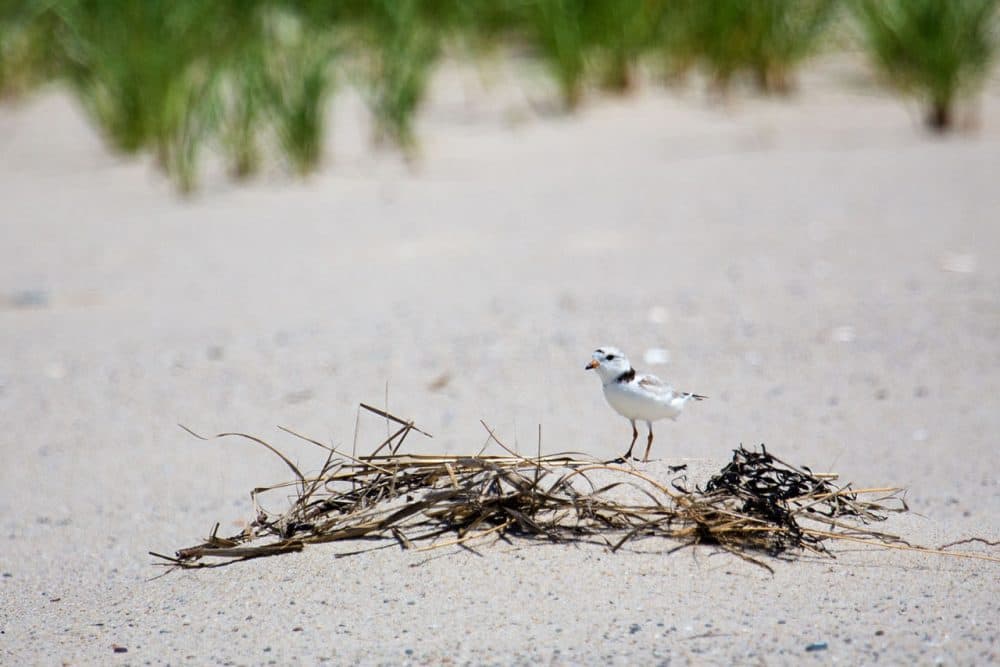
This is a story about a small bird, a small town and a new approach to a decades-old problem that has often pitted people against wildlife.
The tiny bird is a piping plover, and it is an endangered species. Over the years, certain efforts to save these birds have caused beaches around Massachusetts to close down in the summer.
But now, the Outer Cape town of Orleans has developed a plan that backers say will allow beachgoers and plovers to coexist peacefully. The new plan involves using a technique to discourage predators from going after the birds and a self-escorting program — the first of its kind approved by state and federal officials — for off-road vehicles (ORVs) in protected areas. And many hope the plan will be replicated statewide.
An Electrified Structure
On a recent morning at Nauset Beach, on the Cape's ocean side, families with small kids in tow and older residents in floppy hats were spread out along the shore, lounging in the warm sand. But just about a mile south, on a more remote portion of the beach, plenty of work was being done on part of Orleans' new plover plan.
There Paul Wightman, a Nauset Beach shore bird specialist, and Nate Sears, the natural resources manager for Orleans, led a small group of residents around to see the plover habitat. A sandy path for off-road vehicles winds through fenced-off areas and past large circular wire structures. But these structures, called exclosures, have no plovers inside them. Instead, these exclosures have been rigged with 5,000-6,000 volts of electricity, and inside them is a tempting bait for predators.
“That’s salmon in there with fish oil,” Wightman told the group. “[Predators] smell it and they want it. And if they’re not digging at that enclosure, that tells us that basically they’re 'getting' it.”
What predators -- coyotes and foxes — are “getting” is that these structures are off-limits. And that’s exactly what beach officials want — for predators to associate these decoys with something negative so that they stay away from the real structures that are set up to protect plovers.
“By electrifying them and baiting them, we were hoping to draw as many smart predators in as possible before the plovers show up,” Sears said.
It's an approach the team at Nauset Beach hopes will help the birds, which have faced many different challenges over the years.
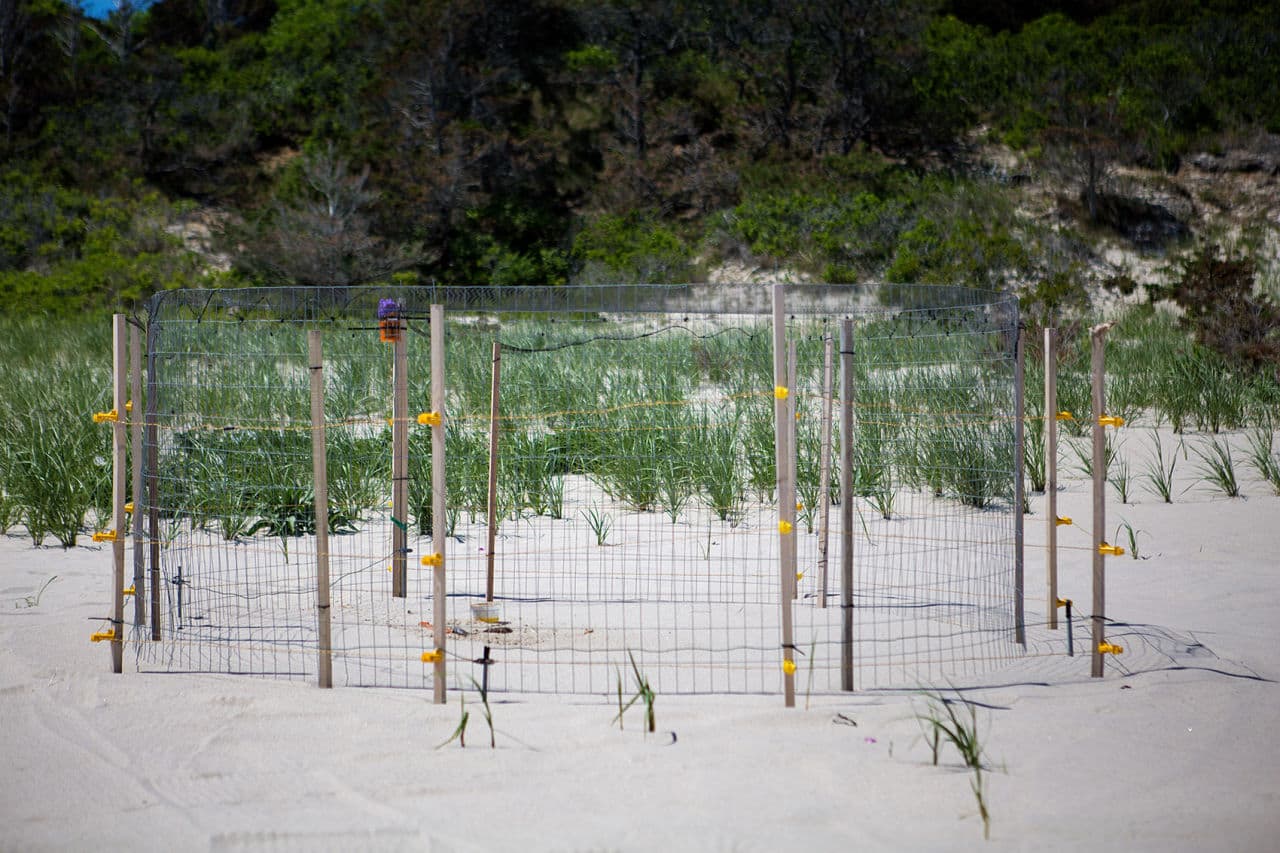
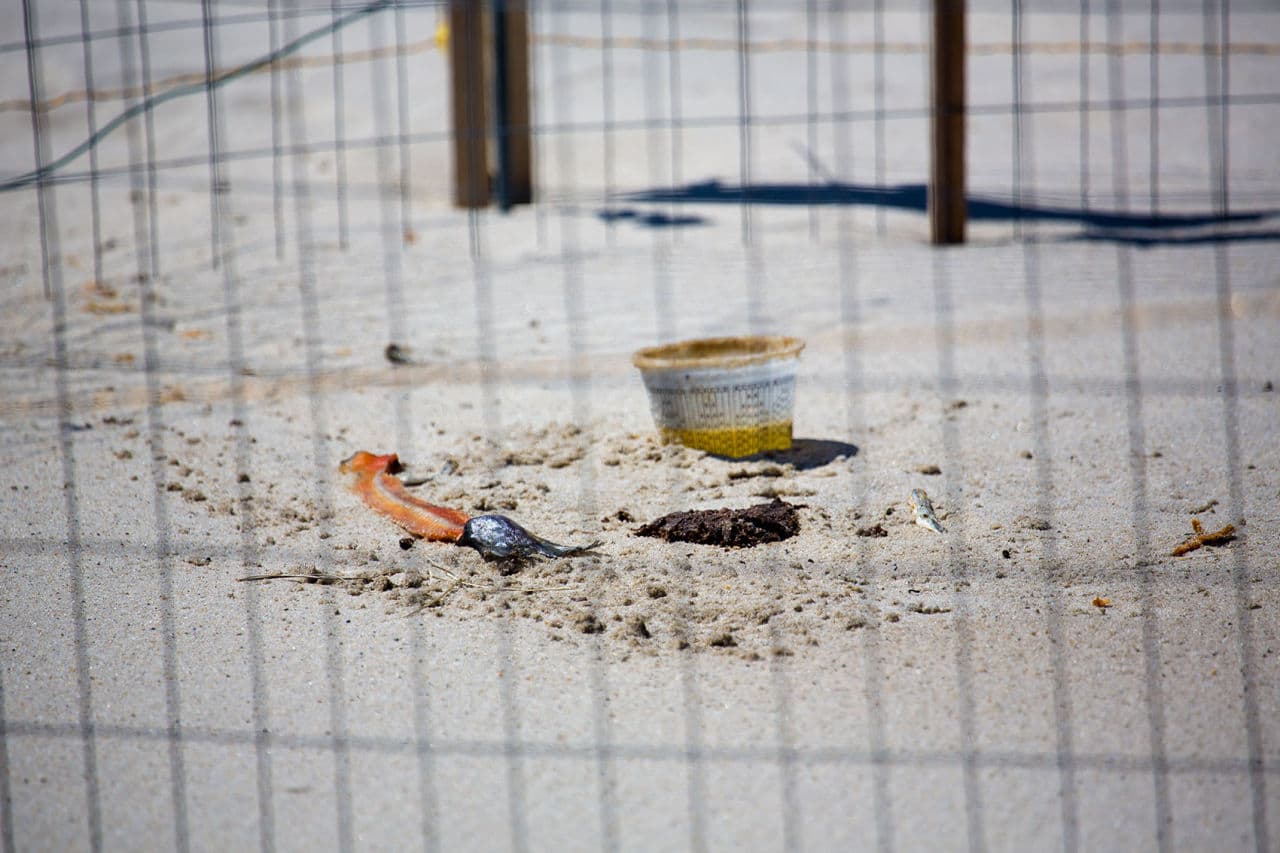
Why All This Trouble For A Small Bird?
Plovers have been federally protected since 1986. They’re shorebirds and have made Massachusetts their summer home for decades; the state’s coastline provides an ideal habitat for them to forage. They are about seven inches long with white bellies and sand-colored feathers on their backs, making them hard to see as they run back and forth across the beach to feed on crustaceans, small insects and worms along the shoreline. The chicks could easily be described as cotton balls with legs.
And depending on whom you ask, the name of the bird is pronounced PLOVE-er or PLUH-ver. So which is it? Answers to this question vary, but they all usually begin with a laugh then, “It depends who you ask” or “I hear it said both ways.” The group touring Nauset agreed it probably should be called PLUH-ver, but they say PLOVE-er anyway out of habit. According to Mass Audubon, both pronunciations are correct.
The birds were very abundant until the 19th century, when they were hunted almost to extinction because their feathers were valued for women's hats, according to bird specialist Wightman. Loss of habitat due to rising sea levels, overpopulation and building and construction have also challenged the bird population over the years. Today, predators are the biggest problem, Wightman said.
“There is a goal to get them off the [endangered] list and there’s been a tremendous amount of work done and money and effort spent by many communities, many governmental agencies to protect the piping plovers, and we’ve made great strides,” Wightman said.
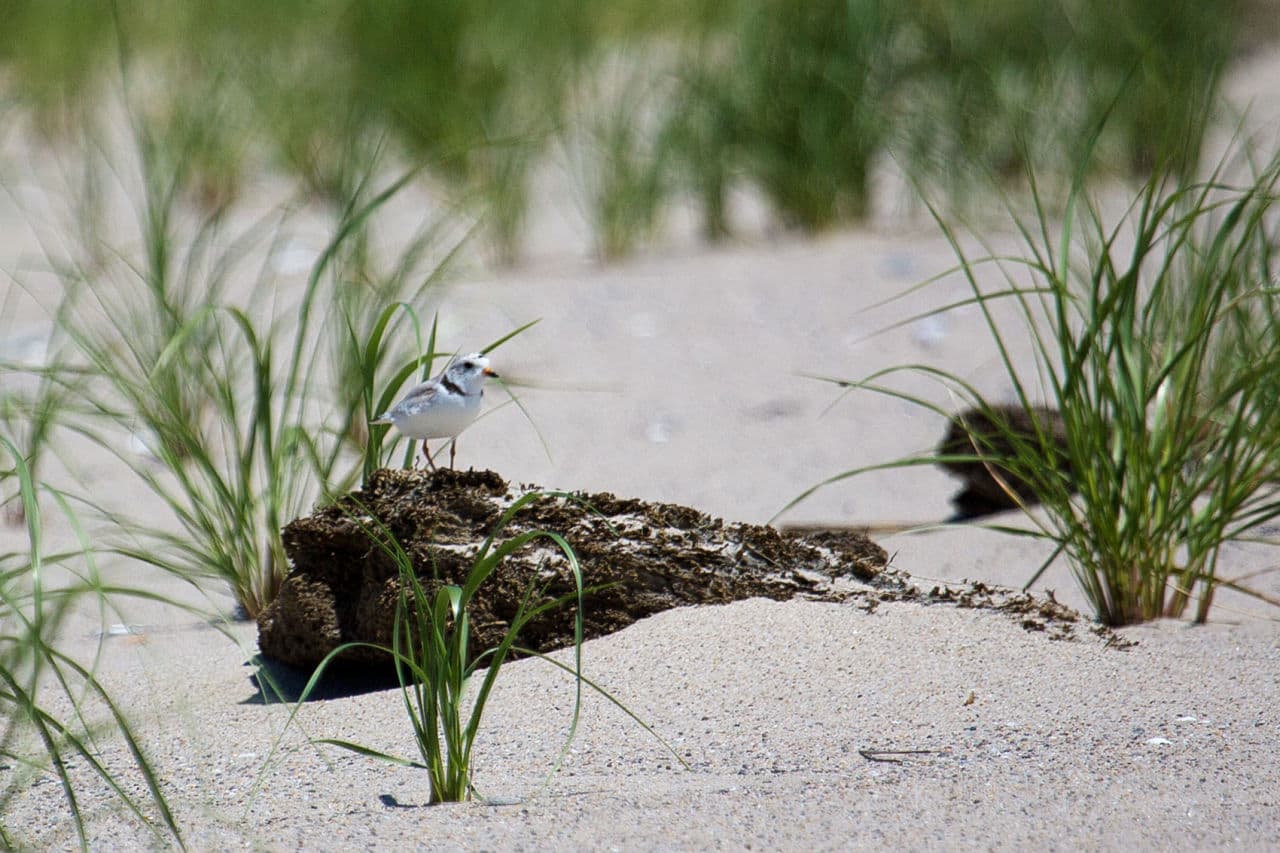
In Massachusetts, the piping plover population has gone from 139 pairs in 1986, when the birds were added to the endangered species list, to a preliminary estimate of 664 pairs in 2014, according to the Massachusetts Division of Fisheries & Wildlife. Across the Atlantic Coast region, the population has grown from 790 pairs in 1986 to a preliminary estimate of 1,750 pairs in 2014, according to the U.S. Fish & Wildlife Service.
While the population numbers are up, there's still work to be done to get the birds off the endangered species list.
MassWildlife also tracks the birds' productivity — the number of chicks that fledge (reach the point of being able to fly). The federal recovery plan says productivity should be about 1.2-1.3 to have a stable population, meaning each plover pair produces 1.2-1.3 chicks that fledge. The latest estimate in Massachusetts is 0.8 in 2013, according to MassWildlife.
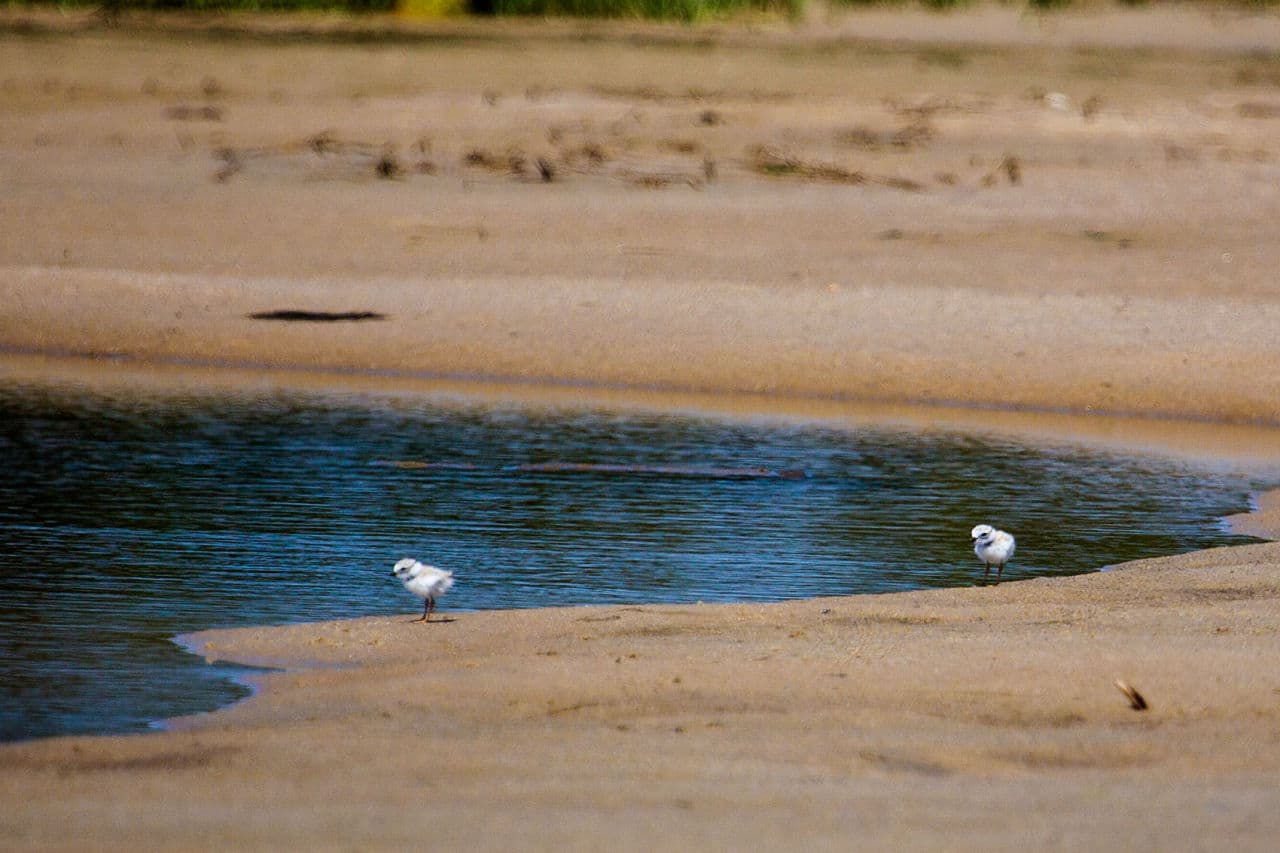
The birds tend to arrive in April and leave by August's end. For the months in between, the birds pair up, mate and reproduce. They lay a clutch of four eggs, which hatch 26 to 28 days later. Once the chicks are born, they feed constantly in order to fatten up for the migration south. That process takes about 26 to 35 days until they fledge. However, if none of the four chicks survives the plovers will renest, up to four or fives times, until around mid-July, when they're no longer able to produce viable chicks for the migration, according to Sears, the natural resources manager.
And therein lies the problem. If the birds continue to renest, it pushes the fledging period into August, creating a conflict for beachgoers who want access to the area in the summer.
"The issue was, how do we get some balance back, because it was one extreme just to shut the beach and it’s another extreme just to drive through the nests and not care."
Orleans Selectman John Hodgson
Over the years, Nauset Beach, like other beaches in the state, has had to close down. Last year the beach was closed for 81 days from June 3-Aug. 23. In 2013, the beach closed for 65 days from June 11-Aug. 15.
In Orleans, driving on the beach is a long-standing tradition. You drive for the remoteness, locals say. Those areas also provide the opportunity to grill on the beach or fish and surf in a more scenic environment.
“This has been a historical activity that people do on the north side of the beach and the south side of the beach,” said Orleans Selectman John Hodgson. “They’ve brought their families there, grandparents brought their grandkids — it’s just what folks do when they move to town here.”
But year after year, the beach closures became longer — to the point where there was no access for most of the summer. For the town, the closures have also meant a loss of revenue from ORV permits of upwards of $225,000 per year, according to Hodgson.
“The issue was, how do we get some balance back, because it was one extreme just to shut the beach and it’s another extreme just to drive through the nests and not care,” Hodgson said.
That's where the Orleans habitat conservation plan comes in.
Getting 'Some Balance Back'
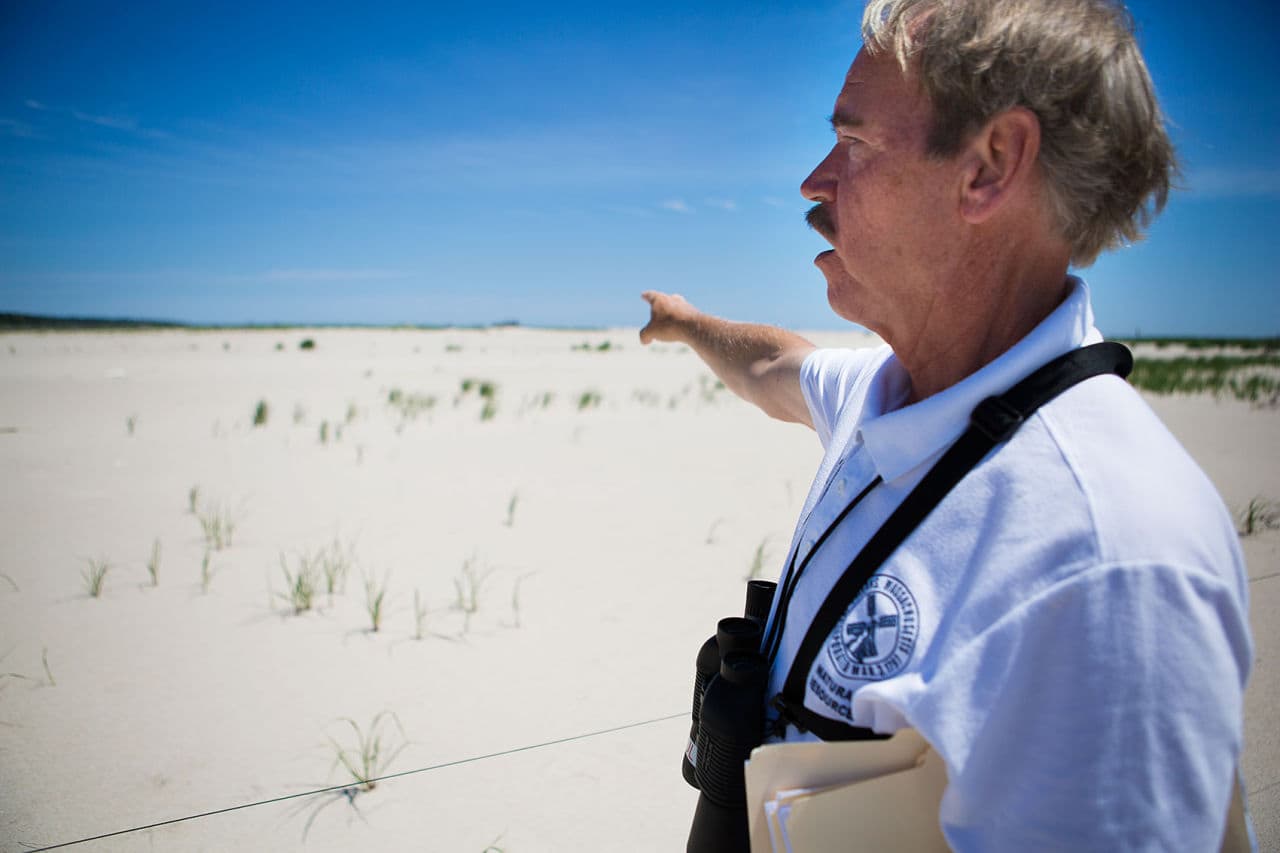
The plover plan has two parts. Part 1 focuses on trying to change the behavior of predators by using the electrified decoy exclosures. Part 2 -- the habitat conservation plan — will give visitors access to remote parts of the beach through a self-escorting program for off-road vehicles.
Part 1 began early in the season, in March, with six decoy exclosures that are moved around regularly so predators don’t get used to their locations.
In the south part of Nauset Beach there’s a marshy area between Pochet Island and Little Pochet Island known as the Pochet wash. The plovers love this area. Standing nearby, Sears told the group of residents touring the habitat how track analysis and game camera footage from the decoy exclosures had shown many of the predators have been electrocuted.
“In the beginning we did have digging and circling, intensive circling, with the bait,” Sears said. “Once the animals had been shocked … that has pretty much phased way back to the point where we’re not having any digging or intensive circling on any of the freshly baited decoy exclosures.”
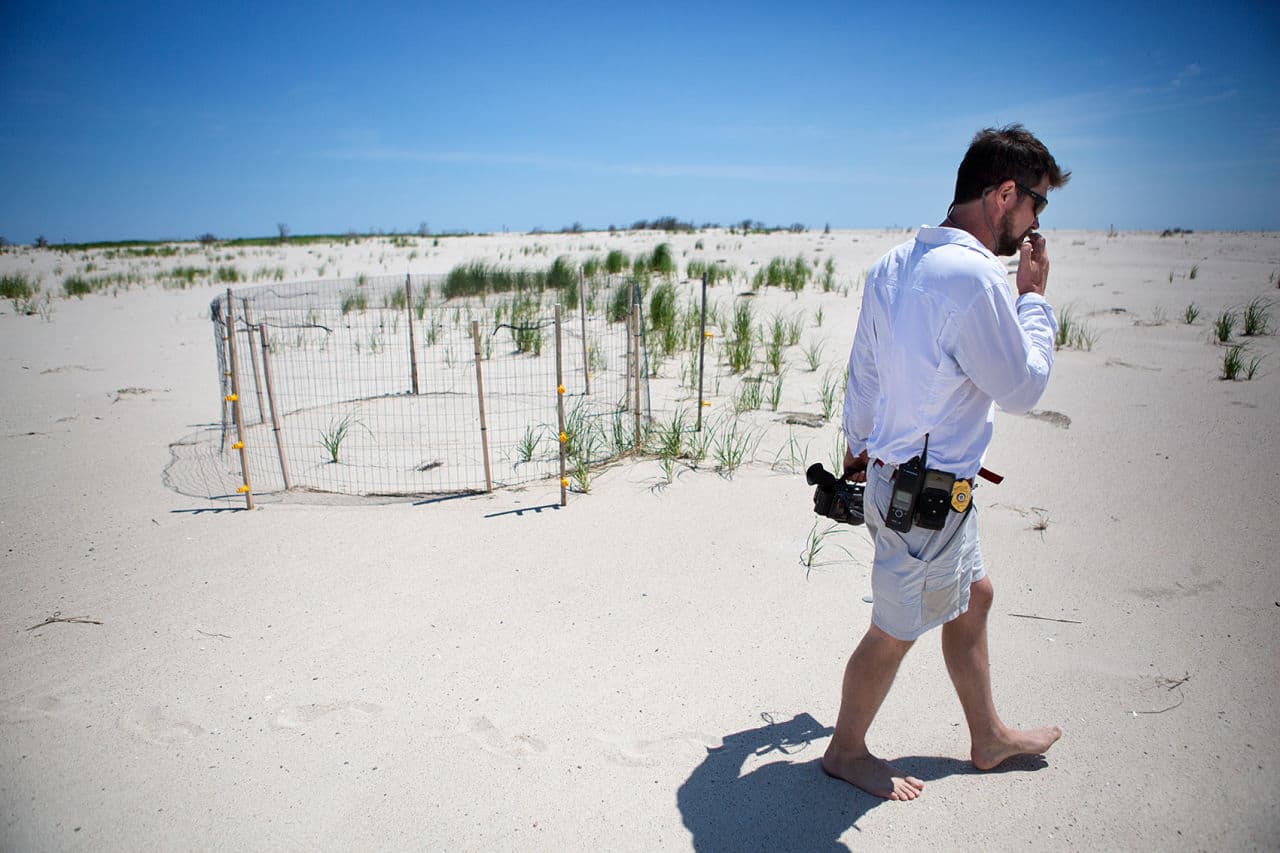
While this part of the Orleans plover plan works to provide some relief for the birds, the second piece of the program is designed to give beachgoers their own relief this summer.
The habitat conservation plan has been two years in the making, as town officials worked with state and federal wildlife authorities and other stakeholders to put the program together. MassWildlife approved the plan in July 2014, issuing the town a permit for the ORV escorting program under the state’s Endangered Species Act. The permit allows Orleans to operate the program for three beach seasons anytime over the next five years. The self-escorting program will cost the town $60,573, which will be covered by a $16 surcharge on ORV permit stickers, according to Sears.
The program will allow 180 ORVs access to the remote stretch of beach from 8-10 a.m. The vehicles can then leave during a window from 4-6 p.m. This means vehicles will be required to stay a minimum of six hours on the beach. Each vehicle will be required to have someone (16 or older) walk in front of the vehicle through the self-escorting areas. Before the beach opens to the ORVs each morning, bird monitors will locate the chicks and make sure they're 100 feet outside the self-escorting area. If the chicks become unaccounted for, traffic will be halted until they are located.
“When it’s windy and raining and the weather is not favorable it’s really hard to locate these chicks,” Sears said. “They just hunker down in the grass. We have a challenge ahead of us for sure.”
The town has hired additional bird monitors to help with the program and will have a total of 10 monitors this summer.
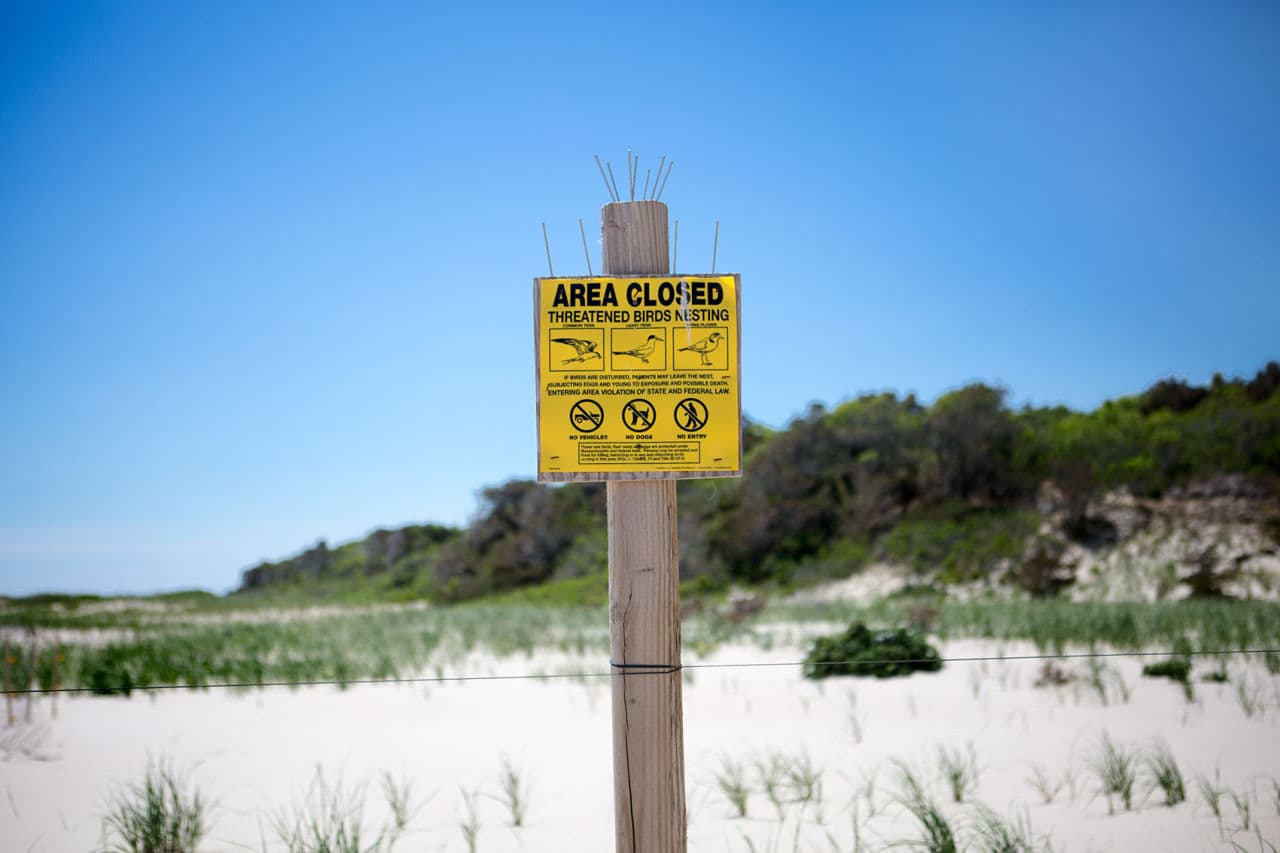
The earliest the program can begin is after July 15, according to Sears. That's typically when there is a small number of plovers re-nesting. Under the permit from the state, the ORV program can only be implemented if there are two broods (families) or fewer nesting. Currently, there is one brood that re-nested with three eggs due to hatch later this month. If the chicks survive, the ORV program will be implemented.
The prospect of opening up the beach for vehicles while still protecting the plovers is welcome news for many Orleans residents.
A 'Necessary Compromise' For Beachgoers
“I think it’s a very necessary compromise,” said Jane Corlette as she braced herself in the back of a truck as the group touring the plover habitat made the ride back to Nauset Beach.
Corlette is a retired Orleans resident and volunteers on a small non-commercial farm. She took the tour for a chance to see the plovers and learn more about the birds.
“I’m pretty much an environmentalist since I live here on Cape Cod," she said, "and I’ve come to worry a lot about how it’s changing and I’m hoping that a lot of good things will survive if we take care of them properly.”
While she was touring the plover habitat, her husband was on his way to pick up a permit for an ORV, Corlette said. They plan to drive out on the beach this summer when their grandchildren visit.
Corlette’s friend Elizabeth De Lima was also along for the tour and said she’s cautiously optimistic about the Orleans plan. She said she believes “any wildlife has a right to be here as much as we do."
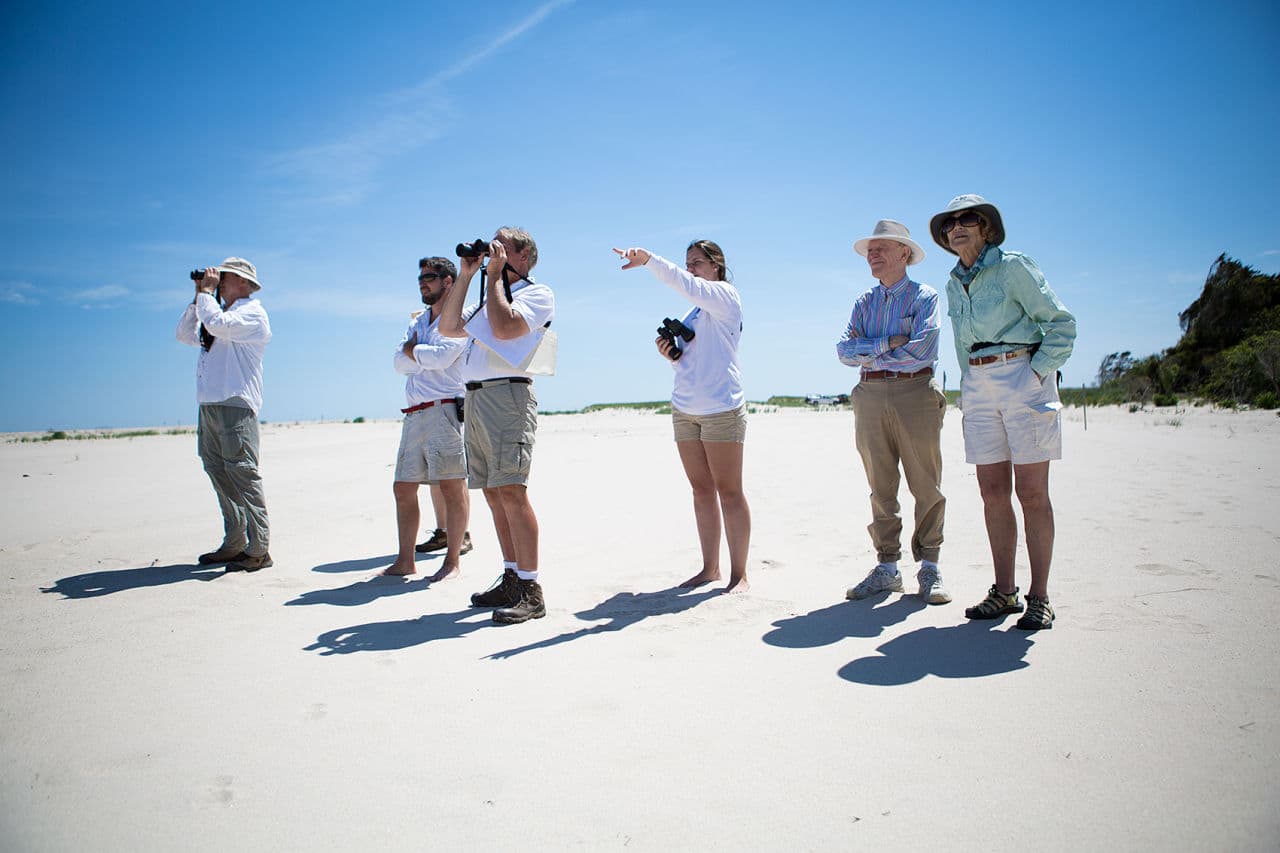
De Lima and Corlette have known each other since they were 15 and spent summers waitressing on the Cape. De Lima recalled when they were younger how there were fewer restrictions and they could play in sand dunes and “do anything you wanted” on the beach.
“We didn’t realize that we were harming the environment, it was just the freedom of a child,” De Lima said.
Gary Dutton, another Orleans resident on the tour, said he was impressed the town was “going to this extreme” to protect the piping plovers. His family usually drives out on the north side of Nauset Beach. Wearing a fisherman’s hat and a set of binoculars, Dutton considers himself “sort of a bird watcher” with an interest in the plover situation. He said dealing with nature is “a very difficult problem with a lot of ramifications,” so he wants to see how the plan goes this summer.
Scott Morris, the vice president of the Massachusetts Beach Buggy Association, believes the escorting program will work. He grew up going to Nauset Beach and his family has driven out on the beach for generations. Morris also helped work on the Orleans plan and said a lot of thought went into how to make the beach accessible to ORVs.
“As long as we can keep everyone under the understanding of what we’re trying to do here and as long as they follow the rules and regulations of this program, we … feel that it will succeed,” Morris said.
Back at the tour group, De Lima said she hopes the program, if successful, can reach far beyond Orleans.
“I would hope that if it’s successful this year that it can be replicated up and down the coast and that more plovers will be able to have eggs that hatch and that the population will be saved,” De Lima said.
And that’s exactly what local officials and others across the state want.
A Statewide Plover Conservation Effort
Orleans is the first town along the Atlantic Coast to have a federally approved plover conservation plan and permit, according to the U.S. Fish & Wildlife Service.
“With Orleans they have a permit specific to that town and that program,” said Meagan Racey, a service spokeswoman. “They were essentially pioneers on this. We’re now pursuing an umbrella that provides a more streamlined approach.”
A statewide plan would make it easier for other towns to implement their own plover conservation plan, instead of having to go through the state and federal government, as Orleans did.
“It has a conservation benefit in terms of providing important management and mitigation for the plovers, it also benefits beach operators that want more flexibility to address recreational issues and then… there’ll be one master permit that we as a state agency are going to obtain from the U.S. Fish & Wildlife Service,” said John Regosin, the chief of conservation science for the natural heritage & endangered species program at MassWildlife.
A statewide habitat conservation plan would not just cover ORV use, but would give towns the ability to develop a plan specific to their needs. Wildlife officials say they hope to have the plan ready for public comment by early fall.
“Every species deserves a chance and these birds ... they’re in a battle out here every day, fighting the elements, fighting the night time predation, coyotes, fox, owls, you name it."
Paul Wightman, shore bird specialist
Back at Nauset Beach, Sears and Wightman said they are encouraged by what they’ve seen so far with their program. They also hope their efforts with electrified decoy exclosures become a prototype, as they eventually want to be have electrified exclosures around the plovers.
They also hope a statewide habitat conservation plan comes to fruition. Success for them means an increased number of chicks year after year. Three or four chicks fledging per nest would be successful, Wightman said.
“Every species deserves a chance,” Wightman said. “[Plovers have] come back from almost the brink so that’s why it’s important to do it. They’re in a battle out here every day, fighting the elements, fighting the night time predation, coyotes, fox, owls, you name it."
This segment aired on July 17, 2015.
